Game Viewer

How can I increase viewer interaction in my online broadcasts ?
Increasing viewer interaction is crucial for online broadcasters to build a loyal fan base and improve engagement. Strategies include engaging with the audience through live chat, polls, and Q&A sessions; incorporating interactive games, collaborations, and guest appearances; using visually appealing graphics and custom overlays; building a community through fan groups and contests; and encouraging viewer participation by showcasing their content.

How important is viewer interaction to the success of a live stream ?
The importance of viewer interaction in live stream success cannot be overstated. It not only enhances the viewer's experience but also helps build a strong community around the content. Engaging content, building community, and measuring success are all crucial aspects of viewer interaction that can help ensure the success of a live stream. By providing engaging content, interacting with viewers, collaborating with other creators, and tracking key metrics, you can create a loyal fan base that will support your live streams and help promote your content to others.

How can I effectively respond to viewer comments and questions in real-time during a live broadcast ?
Effective Real-time Response to Viewer Comments and Questions During a Live Broadcast Live broadcasting has become an increasingly popular way for content creators to connect with their audience. However, responding to viewer comments and questions in real-time can be challenging. This guide will provide tips on how to effectively respond to your viewers during a live broadcast. Tips for Responding to Viewer Comments and Questions: 1. Stay Calm and Professional 2. Acknowledge and Address Viewer Comments 3. Use Short and Clear Replies 4. Encourage Further Engagement 5. Leverage Moderation Tools By following these tips, you can effectively engage with your audience and create a positive viewing experience. Remember to stay calm, acknowledge and address concerns, use short and clear replies, encourage further engagement, and leverage moderation tools as needed.

What techniques are used in filmmaking to make slow-paced sports like golf or chess more exciting for viewers ?
Slow-paced sports like golf or chess can be challenging to make exciting for viewers. However, filmmakers use various techniques to enhance the viewing experience and keep audiences engaged. Here are some of the most common techniques used: 1. Close-Up Shots 2. Drama Between Players 3. Commentary and Analysis 4. Music and Sound Effects 5. Visual Effects and Graphics 6. Storytelling 7. Multiple Camera Angles 8. Replays and Highlights 9. Interactive Elements 10. Narration
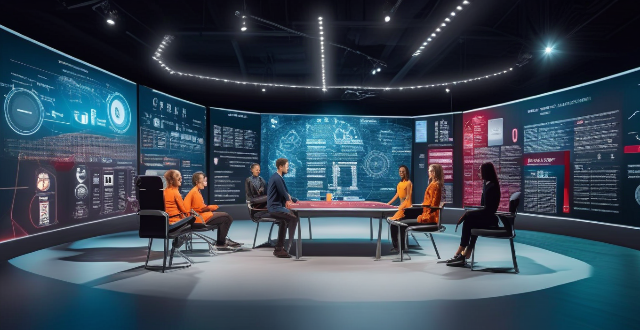
Is there potential for AI to revolutionize sports journalism and broadcasting ?
Artificial Intelligence (AI) has the potential to revolutionize sports journalism and broadcasting by automating content generation, enhancing data analysis and visualization capabilities, delivering personalized content, generating automated commentary, creating immersive VR experiences, and customizing broadcasts based on viewer preferences. AI can save time for journalists, allowing them to focus on more complex tasks such as investigative reporting or in-depth analysis. It can also uncover insights and trends from raw data and present them in visually appealing formats. Personalized content delivery can recommend articles, videos, and other content that align with individual interests. In sports broadcasting, AI can generate play-by-play commentary based on live data feeds, describe each play as it happens, and provide insightful color commentary that adds depth to the viewer's understanding of the game. Virtual reality technology can create immersive experiences that allow viewers to feel like they are part of the action. Finally, AI can customize broadcasts based on viewer preferences by analyzing user data such as viewing history and social media activity. As AI technology continues to evolve and improve, we can expect even more innovative applications in these fields that will further enhance the fan experience and change the way we consume sports content forever.
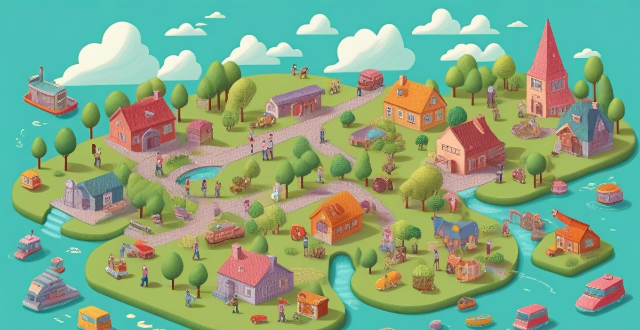
What are the key elements of educational game development ?
Educational game development involves defining learning objectives, understanding the target audience, designing engaging game mechanics and visuals, developing relevant content, implementing assessment and feedback mechanisms, conducting iterative testing, and collaborating with experts in the field. By addressing these key elements, developers can create effective educational games that support learning outcomes and enhance the overall player experience.
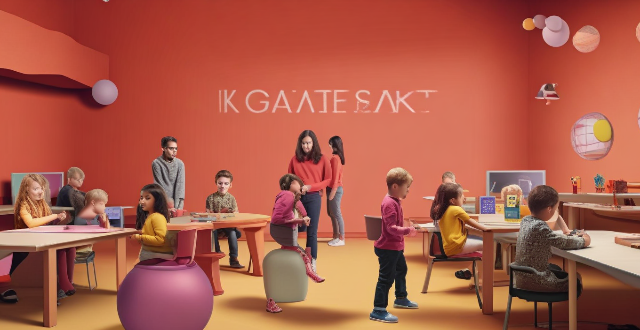
In what ways do gamification and game-based learning foster innovative teaching environments ?
Gamification and game-based learning foster innovative teaching environments by engaging students with challenges and rewards, promoting collaboration and competition, providing immediate feedback and personalization, and enhancing student motivation and engagement. These methods use elements of games to motivate students and enhance their learning experience, making learning more fun, interactive, and enjoyable. By incorporating these approaches, educators can transform traditional classrooms into dynamic spaces where students actively participate in their own learning journey.

How will 5G change the entertainment industry ?
The advent of 5G technology is set to revolutionize various sectors, including the entertainment industry. With its faster speeds, lower latency, and increased connectivity, 5G promises to transform how content is created, distributed, and consumed. In this article, we will explore the potential changes that 5G can bring to the entertainment industry. One of the most significant changes that 5G will bring to the entertainment industry is an enhanced streaming experience. With 5G's faster download and upload speeds, users can enjoy high-quality video and audio content without buffering or lag issues. This means that viewers can watch their favorite movies, TV shows, or live events in real-time, with no interruptions. Moreover, 5G's low latency ensures that there are minimal delays between the broadcaster and the viewer, making it ideal for live streaming events such as sports games or concerts. Another area where 5G can have a profound impact is in virtual reality (VR) and augmented reality (AR) experiences. These technologies require high bandwidth and low latency to function effectively, which makes them perfect candidates for 5G networks. With 5G's capabilities, VR and AR experiences can become more immersive and realistic than ever before. For example, users could attend virtual concerts or sporting events from the comfort of their homes, feeling as if they were actually there. Additionally, AR applications could be used to enhance traditional media by adding interactive elements to books, magazines, or even billboards. Cloud gaming is another area where 5G can make a significant difference. With 5G's fast speeds and low latency, gamers can play high-quality games without needing powerful hardware devices. Instead, they can stream games directly from the cloud, using their smartphones, tablets, or even smart TVs as controllers. This means that gamers no longer need expensive consoles or PCs to enjoy their favorite games; they only need a stable internet connection and a compatible device. Moreover, cloud gaming opens up new opportunities for developers to create more complex and immersive games without worrying about hardware limitations. Finally, 5G can also enable more interactive content creation and consumption. With 5G's increased connectivity and faster speeds, creators can produce interactive videos, podcasts, or other forms of media that allow viewers to engage with the content in real-time. For example, viewers could participate in polls or quizzes during live shows or interact with characters in a movie through AR features on their devices. This level of interactivity not only enhances the viewing experience but also creates new opportunities for advertisers looking to reach engaged audiences.

What are the current trends in educational game development ?
The text describes the current trends in educational game development. These trends include gamification, personalized learning, collaborative learning, real-world applications, and augmented reality (AR) and virtual reality (VR). Gamification involves incorporating game elements into non-game contexts, such as education. Personalized learning focuses on tailoring the learning experience to individual students' needs and preferences. Collaborative learning encourages students to work together towards a common goal. Real-world applications help students understand how the concepts they are learning can be applied in practical situations. Augmented reality (AR) and virtual reality (VR) technologies provide immersive experiences that enhance learning. These trends aim to make learning more engaging, personalized, collaborative, applicable, and immersive for students.
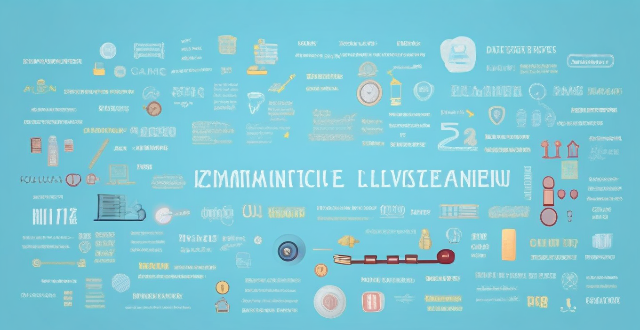
What programming languages are commonly used in educational game development ?
The text is about educational game development and the programming languages used. It lists some of the most commonly used programming languages in educational game development, including Python, JavaScript, Java, C#, UnityScript (C# variant), and HTML5/CSS3/JavaScript. The pros and cons of each language are discussed, along with examples of games that use them. The conclusion states that by choosing the right language for your project, you can ensure that your game is engaging, educational, and accessible to a wide audience.

What are some creative ways to involve my audience in live streaming content ?
Engaging Your Audience in Live Streaming Content Live streaming is a popular way for content creators to connect with audiences. Engaging viewers in real-time enhances the viewing experience and fosters community around your content. Here are some creative ways to engage your audience during live streams: 1. Interactive Polling and Quizzes Integrate polling tools like Slido or Mentimeter into your live stream to get immediate feedback from viewers. Ask questions related to the content you're streaming, allowing viewers to participate actively. Organize quizzes where viewers can answer questions related to your topic. Reward correct answers with shout-outs, digital badges, or small prizes to encourage participation. 2. Live Q&A Sessions Set aside time during your live stream for Q&A sessions where viewers can submit questions. Answer viewer questions on the spot, making them feel heard and valued. Promote a Q&A session ahead of time, allowing viewers to submit questions beforehand. Address pre-submitted questions during the stream, ensuring a steady flow of engagement. 3. Co-Streaming and Guest Appearances Invite guests to join your live stream, adding fresh perspectives and attracting a wider audience. Co-stream with other creators, cross-promoting each other's channels and expanding your reach. Feature viewer comments or reactions on screen, giving them a chance to be part of the stream visually. Incorporate viewer suggestions into the stream if possible, showing that their input is valued. 4. Interactive Games and Challenges Host games that viewers can play along with you, such as trivia or word association games. Create challenges specific to your content niche, encouraging viewers to engage creatively. Offer rewards for active participation, like exclusive access to content or personal shout-outs. Implement a point system where viewers earn points for interactions, which can be redeemed for perks. 5. Social Media Integration Use social media hashtags to create buzz around your live stream and encourage interaction outside the platform. Promote viewer posts on your story or feed, giving them more visibility and encouraging others to engage. Share behind-the-scenes clips on social media, giving viewers a sneak peek of what's coming up. Post live updates during the stream, keeping followers engaged who are not watching live. 6. Personalized Shout-Outs and Acknowledgments Give shout-outs to viewers who consistently engage with your streams. Celebrate milestones like subscriber counts or special events with personalized messages. Showcase viewer-created content related to your stream, such as fan art or cosplay. Feature viewer profiles on your social media, promoting a sense of community among your fans.

What role does gamification play in educational game development ?
Gamification plays a crucial role in educational game development. It is the process of incorporating game elements into non-game contexts to make them more engaging and motivating for learners. In the realm of education, gamification can transform traditional learning experiences into interactive and enjoyable ones. This approach not only enhances student engagement but also fosters a positive learning environment. Key roles of gamification in educational game development include enhancing student engagement, providing immediate feedback, fostering competition and collaboration, encouraging self-directed learning, and incorporating relevant content. By leveraging these principles, educators can create effective learning experiences that are both enjoyable and impactful for students.

What are the challenges faced by educational game developers in creating games that are both fun and educational ?
The text discusses the main challenges faced by educational game developers, including balancing education and entertainment, meeting educational standards, adapting to different learning styles, and engaging students long-term.

What is the status of the NBA All-Star game due to COVID-19 concerns ?
The NBA All-Star game was canceled in 2021 due to COVID-19 concerns. This decision had a significant impact on both players and fans, as they missed out on an exciting event. Alternative events were organized to provide some entertainment value, but they were not able to fully replace the excitement of the actual All-Star game. The future of the event remains uncertain, but changes may be made to better accommodate health and safety concerns moving forward.

How can athletes manage pre-game nerves and anxiety ?
Pre-game nerves and anxiety are common for athletes but can be managed through various strategies, including mindfulness techniques, physical preparation, mental strategies, support systems, and practice. These methods help athletes perform at their best by transforming nervous energy into focus and drive for success.

How can educational game developers create engaging and interactive games without sacrificing educational content ?
Educational game developers can create engaging and interactive games without sacrificing educational content by focusing on clear objectives, gamification techniques, feedback mechanisms, collaborative features, and customization options. These key aspects can help developers create experiences that are both fun and educational for players of all ages.

How can educational game developers measure the impact of their games on student learning outcomes ?
Educational game developers can measure the impact of their games on student learning outcomes through various methods, such as pre- and post-testing, surveys and feedback forms, observations and interviews, and comparative studies. These strategies allow developers to see if there has been any improvement in the students' knowledge or skills related to the game's content, gather information from students about their experience with the educational game, provide valuable insights into how well the game is working as an educational tool, and compare the learning outcomes of students who played the educational game with those who did not. By utilizing these methods, developers can gain valuable insights into how well their games are working as educational tools and make necessary adjustments to improve their effectiveness.

What strategies can I use to encourage more comments and questions during my live streams ?
Engaging your audience during live streams is crucial to building a loyal community and enhancing the overall experience. Here are some strategies you can use to encourage more comments and questions: 1. Ask for Interaction: Directly invite comments and create a culture of participation. 2. Engage with Your Audience: Respond to comments and use viewers' names. 3. Create Interactive Content: Dedicate portions of your stream for Q&A and use polls or surveys. 4. Host Giveaways and Contests: Organize giveaways where entries are based on commenting or sharing thoughts in the chat, and host contests where viewers need to engage by leaving comments or asking questions to participate. 5. Segment Your Content: Structure your stream with short breaks dedicated to reading and responding to comments, and have specific days where you focus on viewer interactions. 6. Leverage Social Media: Encourage viewers to continue discussions on other social media platforms and share interesting comments or questions from your live streams on social media to encourage more interaction during the next session. 7. Offer Exclusive Content or Perks: Offer exclusive content, merchandise, or perks to viewers who regularly engage with comments or questions, and consider creating a membership program where engaging members receive special benefits. 8. Make It Fun: Include games or challenges in your stream that require audience participation through comments or chat commands, and incorporate viewer comments into your narrative or include them as characters in a story you're telling.

In what ways do physical activities promote mental health and deter video game dependency ?
This topic summary delves into the intricate relationship between physical activities, mental health, and video game dependency. It emphasizes the role of physical activities in promoting mental well-being by boosting mood, enhancing cognitive functions, and providing social interaction. Conversely, it highlights how these activities can deter video game dependency by offering alternative forms of entertainment, setting boundaries for gaming time, and fulfilling achievement needs. The text underscores the importance of maintaining a balance between digital leisure and physical activities for overall mental health and well-being.
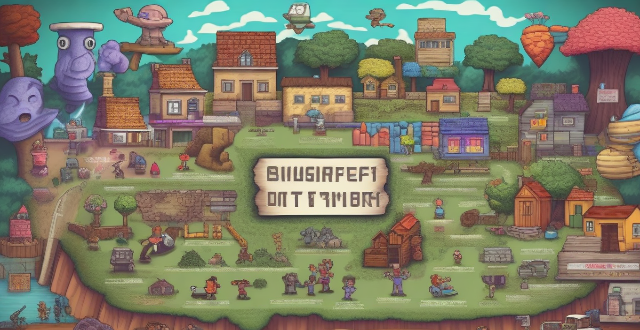
How can educational game developers ensure that their games are accessible to all learners, including those with disabilities ?
Educational game developers have the responsibility to ensure that their games are accessible to all learners, including those with disabilities. This can be achieved by understanding different types of disabilities and how they affect a person's ability to interact with educational games, implementing accessibility features such as text-to-speech, alternative controls, subtitles and audio descriptions, and customizable settings, and testing the game with users who have disabilities to identify potential barriers and refine the game based on feedback. By following these guidelines, developers can create educational games that are accessible to all learners, regardless of their abilities or disabilities.

How can I use polls or quizzes to boost interactivity in my live streams ?
Interactivity is key to keeping your audience engaged during live streams. One effective way to achieve this is by incorporating polls and quizzes into your content. Here's how you can use them to enhance the viewer experience: ### **Polls** #### **Create Engaging Questions** - Start by crafting poll questions that are relevant to your content and encourage viewers to participate. - Make sure the questions are clear and easy to understand. #### **Use Poll Results to Guide Your Content** - Use the results of your polls to steer the direction of your live stream. This makes viewers feel like they have a say in what happens next. - Address the poll results and discuss why certain choices were more popular than others. #### **Time Your Polls Appropriately** - Introduce polls at moments when you want to re-engage your audience or when the content allows for a natural break. - Avoid placing polls too close together, as this can disrupt the flow of your stream. ### **Quizzes** #### **Design Fun and Challenging Quizzes** - Create quizzes that are both fun and challenging for your audience. This could be related to your content or general knowledge topics. - Offer rewards or recognition for viewers who answer correctly, such as shout-outs or exclusive content. #### **Incorporate Multimedia Elements** - Use images, videos, or sounds within your quizzes to make them more engaging and interactive. - This can also help to break up longer segments of talking and keep viewers interested. #### **Encourage Participation** - Ask viewers to comment their answers or use a polling tool that allows for real-time results. - Engage with the audience by responding to comments and discussing the correct answers after the quiz. ### **General Tips for Polls and Quizzes** #### **Keep It Simple** - Don't overcomplicate your polls or quizzes. Keep them straightforward so that all viewers can participate easily. #### **Vary Your Formats** - Mix up the types of polls and quizzes you use to prevent repetitiveness and maintain interest. #### **Analyze Responses** - Pay attention to the responses you receive from polls and quizzes. They can provide valuable insights into what your audience likes and dislikes. #### **Promote Interaction** - Encourage viewers to share their opinions and interact with each other through the comments section while participating in polls and quizzes.

What are the best board games for families to play together during weekends ?
This text lists some of the best board games for families to play together during weekends. The list includes Monopoly, Scrabble, Ticket to Ride, Catan, Pandemic, Codenames, Carcassonne, Dixit, Bananagrams, and Qwixx. Each game is described with its main features and suitable age range, number of players, and playing time.

What are the best practices for engaging with viewers during a live stream ?
The text provides a comprehensive guide for live streamers to engage with their audience. It outlines 10 best practices, including welcoming viewers, acknowledging newcomers, asking open-ended questions, responding to comments, using viewer's names, creating polls or Q&A sessions, sharing personal stories, showing appreciation, maintaining a positive atmosphere, and ending with a call to action. Each practice is accompanied by sample dialogue that demonstrates how to implement the suggestion during a live stream. The guide emphasizes the importance of building a connection with viewers, creating an interactive experience, and fostering a welcoming environment.

How can coaches use sports technology analysis to develop game strategies ?
Coaches can utilize sports technology analysis in numerous ways to develop game strategies. Key points include: 1. Data collection and analysis for player performance tracking and opponent research. 2. Utilizing video analysis software for tactical breakdowns and play design. 3. Conducting biomechanical assessments for injury prevention and performance optimization. 4. Implementing virtual reality (VR) training for simulated environments and skill development. 5. Using GPS and radio frequency identification (RFID) systems for movement analysis and load management. 6. Applying advanced statistics and analytics for deeper insights into performance and trend analysis. 7. Leveraging communication tools for instant feedback and strategy sharing. 8. Incorporating weather forecasting tools to adapt practices and prepare for game day conditions. 9. Employing recovery technology to monitor and enhance player recovery methods. 10. Integrating strength and conditioning apps for customized workouts and progress tracking. By incorporating these technological tools, coaches can make more informed decisions, improve player development, and gain a competitive edge during practices and games.

What are some examples of successful educational games and what makes them effective ?
Educational games have become popular for engaging students and making learning enjoyable. Successful examples include Minecraft: Education Edition, Kahoot!, Osmo Genius Kit, and CodeCombat. These games are effective due to their engagement, adaptability, immediate feedback, collaboration, and real-world application. Incorporating these elements can create a more enjoyable and effective learning experience.

What kind of indoor games can parents play with their children to strengthen their bond ?
The article provides a list of indoor games that can help strengthen the bond between parents and children. The games include board games like Monopoly and Chess, card games such as Uno and Go Fish, puzzles and brain teasers like Sudoku and crossword puzzles, arts and crafts activities, indoor treasure hunts, and cooking/baking projects. These games not only provide entertainment but also offer opportunities for learning and quality time spent together.
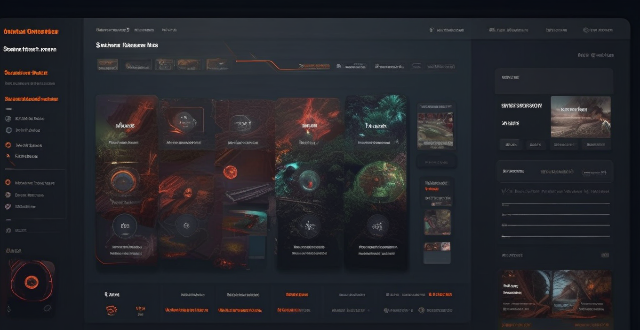
How have online streaming services changed the way we watch and follow sports events ?
The advent of online streaming services has revolutionized sports viewing by increasing accessibility, customization, and engagement. Fans can now watch live games from anywhere, use second screen experiences, follow favorite teams, and enjoy interactive and social media features during broadcasts. Economically, subscription models and advertising opportunities have expanded. However, challenges like buffering, latency, and piracy concerns must be addressed for sustainable growth in this domain.